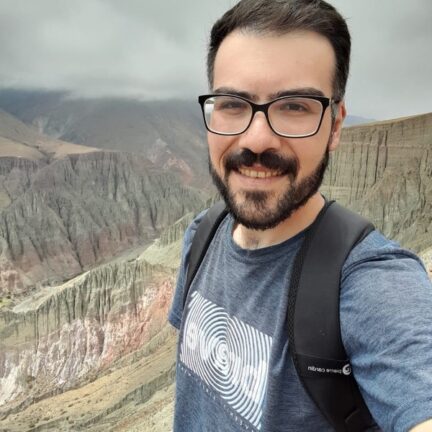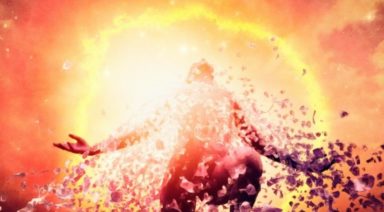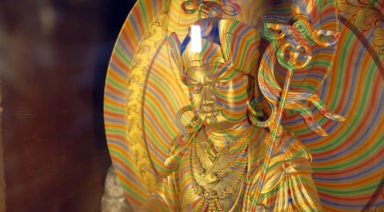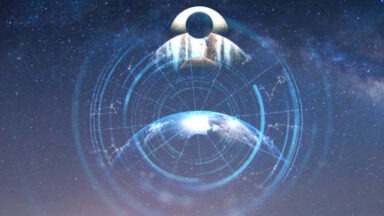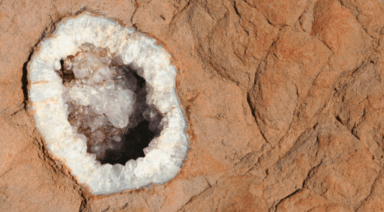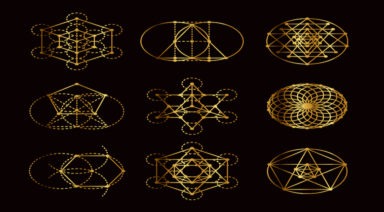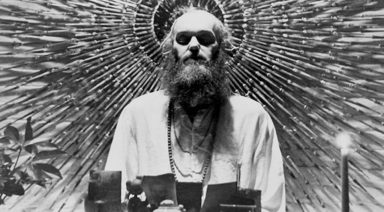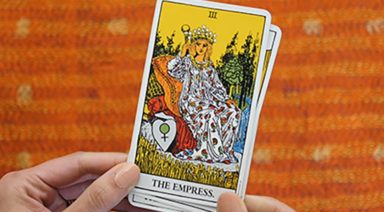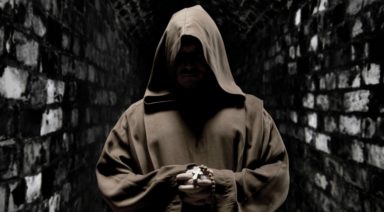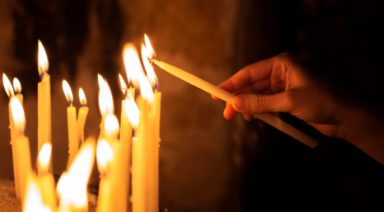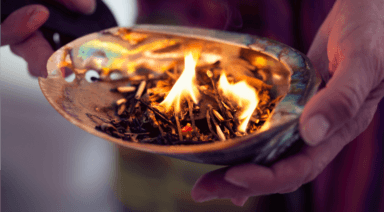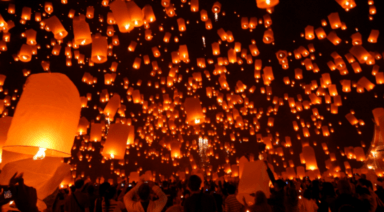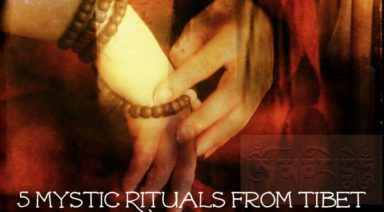What Is the Dark Night of the Soul and How to Go Through It
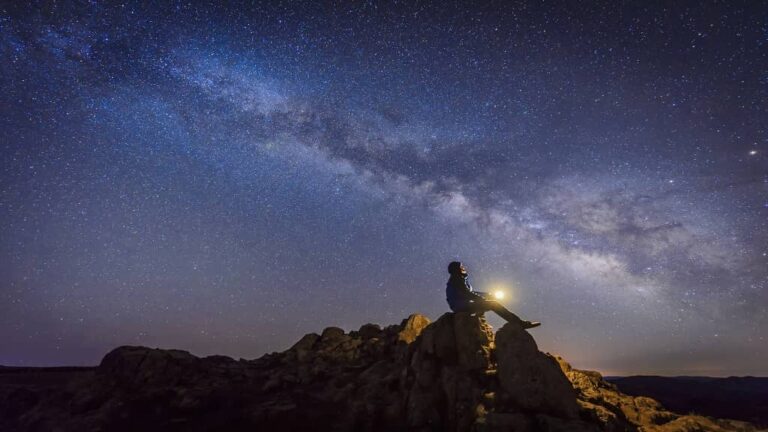
The dark night of the soul is a profoundly transformative experience that many people go through at some point in their spiritual journey. It is an intense process of inner crisis, where everything known seems to lose meaning and a genuine search for truth and purpose begins. In this article we explore what it means to go through this stage, how to identify it and what practices can help you to go through it with greater awareness and clarity.
Table of Contents
- What Is the Dark Night of the Soul?
- Signs That You Are Going Through a Dark Night of the Soul
- Differences Between the Dark Night of the Soul and Depression
- Stages of the Dark Night of the Soul
- Spiritual Practices to Pass Through the Dark Night of the Soul
- Spiritual Awakening After the Dark Night of the Soul
- The Dark Night of the Soul in the Teachings of Carl Jung
What Is the Dark Night of the Soul?
The dark night of the soul is a critical stage of spiritual awakening characterized by deep inner turmoil, loss of meaning and confrontation with the most hidden aspects of the self. It often arises after painful events or moments of crisis that shake internal structures and force a rethinking of the direction of life. It is not a psychological disorder, but a spiritual crisis that pushes the individual to detach from previous identities and explore his or her true purpose.
During this phase, there is an apparent disconnection from the outside world and a confrontation with repressed emotions, unhealed wounds and limiting patterns. This experience can be overwhelming, but it is precisely this crumbling that allows for a more authentic reconstruction. Far from being a sign of failure, it is an invitation to let go of what no longer serves to make way for a more integrated version of oneself.
In the series Sacred Power, available on Gaia, Caroline Myss explores this process in depth in the episode “The Dark Night of the Soul”. Through her guidance, you will learn to identify this stage as an essential part of spiritual development, differentiating it from a common emotional crisis, and discover how to transform it into an opportunity for inner growth.

Signs That You Are Going Through a Dark Night of the Soul
Going through a dark night of the soul can seem confusing at first, especially because its symptoms are often mistaken for common emotional or psychological states. However, there are clear signs that indicate a deep spiritual transformation. Here are some of the most common ones:
- Loss of purpose: You feel that nothing that used to motivate you makes sense and you struggle to find direction. The goals that used to drive you no longer represent you.
- Spiritual disconnection: You are overcome with the feeling that you are disconnected from the divine, the universe or any form of spirituality that used to sustain you.
- Constant introspection: You spend a lot of time questioning your beliefs, your personal history and the pillars on which you built your identity.
- Intense and contradictory emotions: You experience deep sadness, anxiety, anger or despair without a clear cause. These emotions seem to arise from a very internal place.
- Voluntary isolation: You prefer to be alone and avoid social contact. Solitude becomes necessary to process what you are experiencing.
- Desire to free yourself from old versions of yourself: There is an urge to let go of roles, masks or expectations that no longer align with who you really are.
- Attraction to the spiritual or mystical: Despite suffering, you feel a growing need to find answers in spiritual teachings, books, therapies or introspective practices.
Differences Between the Dark Night of the Soul and Depression
Although they share certain emotional symptoms, such as deep sadness or inner emptiness, dark night of the soul and depression are not the same. Depression is a clinical condition that may require medical or therapeutic treatment, while the dark night of the soul is a spiritual crisis that acts as a catalyst for deep inner transformation. In depression, there is a sense of stagnation; in the dark night, the pain has an evolutionary meaning, although it may not be evident at first.
During a depression, vital energy tends to decrease drastically, and it is common to feel apathy, total disconnection from the environment and lack of motivation even for basic tasks. On the other hand, those going through a dark night of the soul are often immersed in an existential quest: suffering is accompanied by deep questions about purpose, truth and the meaning of life. Emotional turmoil coexists with a longing for spiritual awakening.
Another key aspect is that depression is usually a closed state, where the person feels trapped, with no way out and no clear direction. The dark night of the soul, on the other hand, although painful, is a dynamic process that pushes toward transformation. As one goes through it, glimmers of clarity, inner realizations and a new connection to the essential begin to emerge.
Stages of the Dark Night of the Soul
The dark night of the soul does not occur suddenly or evenly; it unfolds in distinct stages that reflect the soul’s inner movement toward a new consciousness. It usually begins with an ego-break, followed by a phase of deep emptiness and loneliness, and culminates in surrender, acceptance and a spiritual rebirth that brings with it greater authenticity, connection and inner clarity.
-
Ego Rupture and Loss of Meaning
The first stage is usually marked by a crisis that dismantles the personal structures with which the ego identified: roles, achievements, beliefs or relationships. What once gave meaning no longer holds, and the sense of disorientation can be overwhelming. This destabilization is not accidental: it is the way in which the soul begins to free itself from constructs that are no longer coherent with its deepest truth.
At this point, many people feel that they “hit bottom” because life as they knew it is no longer valuable. Certainties fade away and an internal process is triggered that invites a letting go of control. Although painful, this break is necessary to allow an identity to emerge that is more aligned with the soul’s purpose, rather than with external expectations or previous conditioning.
-
Existential Emptiness and Inner Loneliness
After the rupture, a deep inner emptiness is experienced. This emptiness is not simply the absence of something, but a pause that interrupts the usual noise of the external world. Life feels directionless and old desires lose strength, giving way to a forced but fertile introspection. The soul enters silence, and that silence can seem unbearable if its purpose is not understood.
Loneliness becomes a constant companion, even when surrounded by other people. It is a loneliness that has nothing to do with social isolation, but with the disconnection from the superficial identity. Through this emotional retreat, an inner purification begins, where the soul is reunited with its essence and learns to sustain itself without depending on external validations.
-
Surrender, Acceptance and Spiritual Rebirth
The final stage of the dark night of the soul begins when the person stops resisting the process and surrenders completely to what he or she is experiencing. This surrender is not resignation, but a sincere openness to transformation. Acceptance allows one to see suffering in a different light: no longer as punishment, but as part of the path to a deeper consciousness.
From this surrender, a spiritual rebirth emerges. A new sensitivity is awakened, a more genuine connection with life, and a clearer understanding of who one really is. This transformation does not eliminate the pain experienced, but integrates it as part of a greater wisdom. What once seemed like a crisis with no way out is revealed as an opportunity to begin again, from a truer place.
Spiritual Practices to Pass Through the Dark Night of the Soul
During the dark night of the soul, spiritual practices not only provide emotional containment, but also act as guides to understand the purpose behind the pain. Through concrete tools, it is possible to access states of greater clarity, sustain introspection and strengthen the connection with the spiritual dimension of the process.
- Meditation and contemplation: These practices help quiet the mind and observe thoughts without identifying with them. Through conscious silence, an inner presence is cultivated that brings stability in the midst of emotional chaos.
- Akashic Records: Allows access to information about the soul’s lessons and the deeper causes behind the current process. The information found in these records provides a clearer understanding of the spiritual purpose behind what is being experienced.
- Writing and silence: Keeping a journal allows for the release of repressed thoughts and clarification of emotions. Combined with spaces of voluntary silence, it enhances the connection with the inner voice and promotes deep self-exploration.
- Connection with nature: Being in contact with natural environments favors energetic and mental balance. Nature acts as a mirror and support during moments of greater inner disconnection.
- Retreats and sacred spaces: Getting away temporarily from the daily environment allows us to observe life with a greater perspective. These spaces foster a reconnection with the essential and with practices that nourish the soul.
Spiritual Awakening After the Dark Night of the Soul
Overcoming the dark night of the soul marks a before and after in the spiritual experience. What emerges after this journey is not an idealized version of the person, but a more authentic identity, free of conditioning. Awakening is not about feeling happy all the time, but about living with greater awareness, coherence and connection with the transcendent.
This inner rebirth is often accompanied by a deep gratitude for life, a heightened sensitivity to the subtle and an expanded compassion for oneself and others. Perceptions of time, relationships and life purposes change: the essential is prioritized and that which no longer makes sense from the soul is released.
Many people, after going through this transformation, experience a renewal of their faith, an openness to new forms of spirituality and a need to share their experience in order to accompany others. The awakening that follows the dark night is not a final destination, but the beginning of a life more aligned with the inner truth.
The Dark Night of the Soul in the Teachings of Carl Jung
Carl Jung, a pioneer of depth psychology, recognized the dark night of the soul as an inevitable stage on the path to individuation. For Jung, the human soul must confront and reconcile with its “shadow“-the repressed or denied aspects of the self-in order to achieve true spiritual and psychological maturity. This confrontation can generate great suffering, but it is also the gateway to a more integral consciousness.
Jung understood that inner darkness should not be avoided, but integrated. He affirmed that “there is no awakening of consciousness without pain”, and considered that existential crises were opportunities for the unconscious to bring transforming messages. In this sense, the dark night of the soul is not a collapse, but an archetypal process of disintegration and reconstruction of the self.
The Jungian legacy offers valuable tools to go through this period, such as dream work, active imagination and the observation of personal archetypes. Together, these practices allow us to dialogue with the unconscious, recognize repressed contents and move towards a more complete and authentic version of ourselves.
The 4 Elements of Nature and Their Spiritual Meaning

The four elements —air, fire, water, and earth— have been interpreted since ancient times as essential expressions of the energy of life. Each represents a quality that is also part of our inner experience. In this article, we explore what each one means, how they influence our daily lives, and why they can help us better understand ourselves.
Table of Contents
- What Do the 4 Elements Represent in Spirituality?
- One by One: The Spiritual Meaning of the Four Elements
- The 4 Elements in Different Spiritual Traditions
- The 4 Elements and the Chakras
- The 4 Elements and the Zodiac Signs
What Do the 4 Elements Represent in Spirituality?
For many spiritual traditions, the elements are not just components of nature but also ways of understanding how our inner energy works. Each one reflects a part of us: how we think, feel, act, and stay grounded in the present. This perspective helps us know ourselves more completely, integrating body, mind, and spirit.
Air is connected with the mind and breathing, fire with action and transformation, water with emotions and intuition, and earth with stability and the body. They are symbols, but also tools: the elements provide a practical way to recognize how our energies are expressed and where we can work to achieve greater balance.
Knowing the spiritual meaning of the four elements allows us to identify which energies are most present in our lives and which ones we might need to cultivate more. If someone feels a lack of direction, they may need more fire. If there is mental confusion, perhaps they need to connect with air. This type of personal reading, based on the elements, offers a simple yet powerful way to work on our energetic and emotional well-being.
One by One: The Spiritual Meaning of the Four Elements
Each of the four classical elements expresses a specific quality of vital energy. Air, fire, water, and earth not only represent aspects of the physical world but also reflect inner patterns that influence our emotions, thoughts, decisions, and the way we relate to our environment. Understanding their spiritual meanings allows us to observe more clearly our strengths, our blocks, and the energies we need to balance in order to live more fully.
Air: The Breath of Life and the Mind
The element air is connected with breathing, the mind, clear thinking, and communication. In many traditions, it is associated with what is invisible yet essential, such as ideas, inspiration, and consciousness. It is also linked to movement, lightness, and the ability to see things from a broader perspective.
From a spiritual point of view, air represents the energy of knowledge, mental intuition, and the connection with the subtlest plane of understanding. When this energy flows in balance, it facilitates clarity of thought, creativity, and open communication. However, when it is unbalanced, it can manifest as mental distraction, excessive thinking, or difficulty concentrating.
Working with the element air involves cultivating inner silence, observing our thoughts without judgment, and learning to express ourselves authentically. Conscious breathing, meditation, and contact with open spaces such as mountains or clear skies can help balance this energy. By doing so, we gain focus, clarity, and a deeper connection with our inner wisdom.
Fire: Transformation, Passion, and Inner Power
Fire symbolizes the force that drives change, willpower, passion, and the power to act. It represents the energy that moves us, the one that ignites the desire to advance, create, and transform. On a spiritual level, fire is the engine that leads us to make decisions, break with the old, and open space for the new.
This element is deeply linked to vital energy, enthusiasm, and the ability to sustain an intention with firmness. When the inner fire is balanced, it manifests as motivation, confidence, and a clear sense of direction. But if it overflows, it can be expressed as impulsiveness, anger, or exhaustion. On the other hand, if it is extinguished, it shows up as discouragement, stagnation, or lack of purpose.
Connecting with spiritual fire requires paying attention to what ignites our passion, what moves us, and what we are ready to transform. Practices such as lighting candles with intention, working with affirmations, or performing energetic body movements can help activate this energy. Fire reminds us that within us lies a spark capable of guiding our process of change and renewal.
Water: Intuition, Emotions, and Flow
Water is connected with the emotional world, sensitivity, intuition, and the ability to adapt. It is the element that flows, that changes form without losing its essence, and that invites us to connect with what is deep. Spiritually, it represents connection with the invisible, the inner world, and what is emotionally authentic.
When water is in balance, it allows us to feel without fear, trust in intuition, and flow with life’s changes. This energy helps us open up emotionally, understand our feelings without repressing them, and create empathetic bonds with others. On the contrary, an excess of water can lead to emotional instability or confusion, while its absence can cause emotional disconnection or difficulty expressing what we feel.
Working with the water element involves cultivating spaces of introspection, allowing ourselves to feel without judgment, and developing trust in our inner perception. Taking mindful baths, meditating near the ocean or rivers, and keeping an emotional journal are ways to activate this energy. Water teaches us that true strength often lies in the ability to adapt and let things flow.
Earth: Stability, Abundance, and Connection with the Sacred
Earth is the element of matter, structure, the body, and everything that sustains. It represents what is concrete, stable, and what gives us security and grounding. Spiritually, it is linked to abundance, nourishment, and deep connection with the sacred that resides in nature.
When earth energy is balanced, we feel centered, trust in our processes, and appreciate what we have. We also cultivate patience, consistency, and presence in the here and now. In imbalance, it can manifest as excessive attachment to material things, fear of change, or a sense of disconnection from the body and everyday reality.
Connecting with earth means becoming aware of the body, the physical environment, and the care of our foundations. Walking barefoot, tending a plant, practicing gratitude, or simply spending time in nature are effective ways to activate this energy. Earth reminds us that spirituality is also lived with our feet firmly on the ground.

The 4 Elements in Different Spiritual Traditions
The idea that the universe is composed of four fundamental elements has been present in many cultures throughout history. This concept has not only served to explain the physical world but also to understand the inner processes of human beings from a spiritual perspective. Air, fire, water, and earth have been seen as universal principles that operate both in nature and in the soul.
In ancient Greece, philosophers such as Empedocles and later Aristotle proposed that these elements were the roots of all existence. Each was associated with specific qualities: heat, cold, moisture, or dryness. This theory deeply influenced medieval alchemy, where the elements were reinterpreted as inner forces necessary for the spiritual transformation of the practitioner.
In India, the Samkhya philosophy and the Ayurvedic tradition also recognize five elements —adding ether or space— that make up the body and the universe. Each of these elements corresponds to physical functions, senses, and vital energies. The same occurs in traditional Chinese medicine, where, although five different elements are used, the focus remains on understanding the interaction between natural forces and how they are reflected in the human body and emotional balance.
Many Indigenous cultures, such as the Andean worldview or the Native American peoples, also work with the elements as living and sacred beings. In these traditions, the elements are not only studied but also revered and honored. They are part of a spiritual framework where humans maintain a reciprocal relationship with their environment, guided by the wisdom of nature.
Over time, the symbolism of the elements has been adopted by various contemporary spiritual currents. Tarot, astrology, reiki, and other energetic systems continue to use this structure to interpret reality. This continuity demonstrates that the four classical elements remain a powerful and relevant tool to explore inner life and the connection with the sacred.
The 4 Elements and the Chakras
The relationship between the four elements and the chakras makes it possible to understand how certain energies manifest in different areas of our body and our life. Each chakra, as an energy center, regulates specific aspects of being: from the physical and emotional to the mental and spiritual. By observing which element is connected to each chakra, we can identify energetic blockages or excesses and work more clearly to harmonize them.
- Root Chakra (Earth): Located at the base of the spine, this chakra represents security, survival, and connection with the physical body. Earth provides it with stability, grounding, and a practical sense.
- Sacral Chakra (Water): Located in the lower abdomen, this center is linked to emotions, creativity, and sexuality. Water gives it fluidity, sensitivity, and adaptability.
- Solar Plexus Chakra (Fire): Situated in the stomach area, this chakra governs willpower, personal power, and action. Fire drives it with energy, determination, and transformation.
- Heart Chakra (Air): In the center of the chest, this chakra is related to love, empathy, and openness toward others. Air gives it lightness, expansion, and the ability to connect.
These 4 elements not only sustain the first chakras but also prepare the way for the higher centers to be activated in a stable way. When body, emotions, willpower, and heart are in balance, energy can rise more smoothly toward the subtler planes of consciousness.
The throat, third eye, and crown chakras—related to expression, inner vision, and spiritual connection—require a solid energetic foundation to expand without creating imbalances. That is why working with the elements not only improves overall well-being but also strengthens any deep spiritual practice.
The 4 Elements and the Zodiac Signs
In astrology, the zodiac signs are grouped into four large families, each ruled by one of the elements. This division influences the way each sign perceives reality, relates to others, and manages vital energy. Knowing which element a sign belongs to can reveal behavioral patterns and deep energetic needs.
- Air signs (Gemini, Libra, Aquarius): Mental, communicative, and sociable. They easily express themselves, adapt, and connect ideas, but may become disconnected from emotions.
- Fire signs (Aries, Leo, Sagittarius): Characterized by initiative, enthusiasm, and vitality. They are natural leaders and passionate, though sometimes act without much thought.
- Water signs (Cancer, Scorpio, Pisces): Emotional, empathetic, and receptive. They have great intuition and emotional depth, but may become overly absorbing or sensitive.
- Earth signs (Taurus, Virgo, Capricorn): Practical, consistent, and organized. They seek security and tangible results, though they can become rigid or conservative.
Beyond the sun sign, each birth chart contains a unique mix of elements, which explains why people of the same sign can be very different from each other. By identifying which energies predominate or are lacking in a natal chart, more conscious decisions can be made to balance them. This perspective provides clarity on how to use the qualities of each element to support personal growth.

